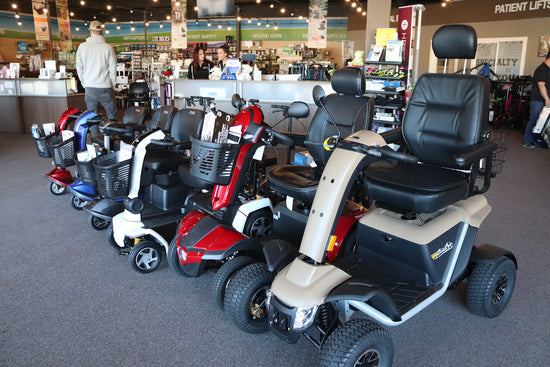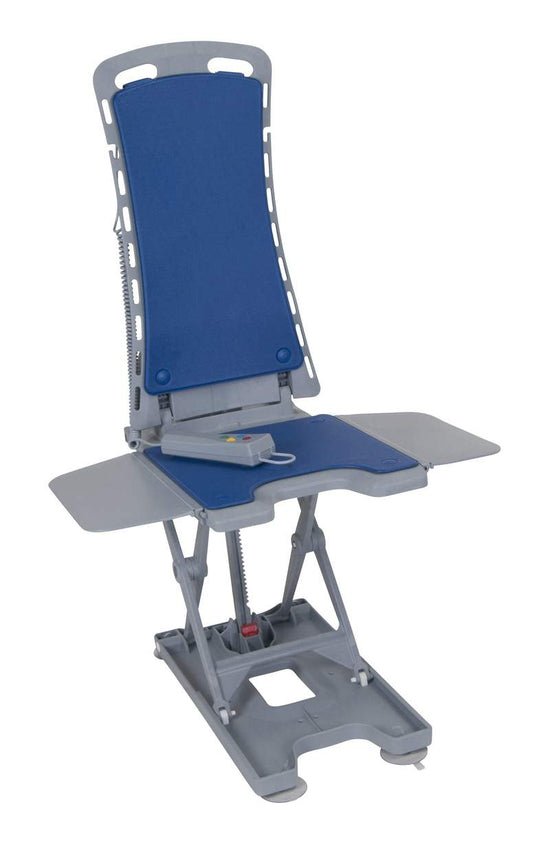Navigating the world with mobility aids—such as canes, walkers, wheelchairs, and scooters—can be both empowering and challenging. While these tools provide essential support for daily movement and independence, the emotional, social, and logistical aspects of using them are often overlooked.
That’s where community support becomes not just helpful but vital. For mobility aid users, the presence of a strong, understanding community can significantly enhance quality of life by fostering inclusivity, offering shared experiences, and breaking down societal barriers. In this blog, we explore why community support is a key pillar in the lives of mobility aid users and how it impacts their overall well-being.
The Emotional Impact of Isolation on Mobility Aid Users
Using mobility aids often means navigating a world that isn’t fully equipped to accommodate your needs. This mismatch between environment and ability can lead to feelings of frustration and, more significantly, isolation. When mobility aid users experience difficulty accessing public spaces or participating in social events, it often leads to a sense of exclusion. Over time, this can contribute to mental health challenges such as anxiety and depression.
Community support acts as a powerful counterbalance to this isolation. By connecting with others who face similar challenges, mobility aid users can find validation, understanding, and emotional relief. These connections remind users that they are not alone in their experiences, and this shared empathy can be incredibly healing.
Moreover, emotional support from peers helps combat the internalized stigma that sometimes accompanies the use of mobility aids. It fosters a sense of belonging and encourages users to take pride in their independence rather than feel shame or embarrassment. Simply put, community reduces emotional burden and strengthens resilience.
How Peer Support Groups Offer Practical Advice and Motivation
Peer support groups offer more than just emotional comfort—they are treasure troves of lived experience and practical wisdom. These groups, whether in-person or virtual, allow mobility aid users to exchange ideas, troubleshoot daily challenges, and motivate each other through shared stories of perseverance.
In these settings, new users can gain firsthand advice on choosing the right mobility aids, adapting home environments, or even navigating public transportation systems. Long-term users benefit by learning new strategies or staying updated on advancements in mobility technology.
The sense of camaraderie in peer groups fosters motivation. Seeing someone overcome an obstacle similar to your own instills a renewed sense of possibility. It becomes a space where successes are celebrated and setbacks are met with encouragement, not judgment. This kind of support network can be pivotal in maintaining both physical and mental health.
Being part of a peer group also encourages accountability in personal care, which often includes exercise, mobility practice, or attending medical appointments. Through this consistent engagement, users are better equipped to maintain their independence and stay proactive in managing their health.
The Role of Advocacy Communities in Improving Accessibility
Advocacy groups formed by or for mobility aid users play a crucial role in driving societal change. These communities work to improve accessibility standards in public spaces, transportation systems, and workplaces, ensuring that mobility aid users are not only accommodated but genuinely included.
When users come together to form advocacy communities, their collective voice carries more weight. They can lobby for legislation, challenge discriminatory practices, and hold organizations accountable for failing to meet accessibility needs. The momentum generated by these groups often leads to tangible changes—like ramps being installed, elevators maintained, or public facilities retrofitted.
Being involved in advocacy also empowers mobility aid users to take control of their narrative. Rather than being passive recipients of support, they become active agents of change. This shift in perspective reinforces a sense of autonomy and capability.
Furthermore, advocacy communities often provide resources such as legal support, education on disability rights, and training sessions for public awareness. These efforts ensure that both mobility aid users and the broader community understand the importance of equitable design and inclusive policy.
Online Communities and Their Benefits for Remote Connection
For many mobility aid users, attending in-person events or meetings isn’t always feasible due to transportation barriers, health issues, or geographic isolation. Online communities fill this gap by offering 24/7 access to support, friendship, and information.
Platforms like forums, social media groups, and dedicated websites allow users to share their experiences and ask questions in real time. This kind of constant availability can be a lifeline, especially for those navigating new diagnoses or unfamiliar challenges. Virtual friendships formed in these spaces often become as meaningful as those formed face-to-face.
Online communities also provide a more inclusive environment for users with varying degrees of mobility. Whether someone is temporarily homebound or dealing with chronic fatigue, they can still be part of a larger network of understanding individuals.
Additionally, digital spaces often allow for anonymity or discretion, making it easier for some users to ask sensitive questions or discuss topics they may be hesitant to bring up in person. This freedom fosters honest dialogue and emotional healing.
Most importantly, online communities create a bridge to the world beyond one’s immediate surroundings. They remind users that they’re part of a larger, interconnected movement that values accessibility, inclusion, and mutual respect.
Shared Knowledge: Tips and Life Hacks from Other Mobility Aid Users
Learning from others who use mobility aids can be a game-changer in daily life. Shared knowledge within communities helps users find efficient, safe, and even creative ways to manage common obstacles. Here are some real-world life hacks mobility aid users frequently share:
-
DIY modifications: Simple home tweaks like rubber grips on canes or attaching baskets to walkers can make a big difference.
-
Public transport tips: Knowing which bus routes are wheelchair-friendly or how to ask for assistance at train stations.
-
Navigating crowds: Techniques for moving through busy areas without drawing unwanted attention or putting oneself at risk.
-
Weather adaptations: Tips like using traction cleats for icy sidewalks or umbrella holders mounted on scooters.
-
Storage solutions: Clever ways to carry items securely without compromising mobility or safety.
These practical insights are often gained through trial and error and can be more helpful than professional advice alone. Being part of a community ensures that this invaluable information is passed along, easing the journey for everyone.
How Inclusive Events and Meetups Reduce Social Stigma
Participating in inclusive social events designed with accessibility in mind can be transformative for mobility aid users. These gatherings provide a space where everyone is valued for who they are, not how they move. More importantly, they help break down social stigma and shift public perceptions around disability and mobility aids.
Here are some key benefits of inclusive meetups:
-
Foster belonging: Being surrounded by others who understand your daily experiences can be comforting and affirming.
-
Boost confidence: Engaging in group activities helps build self-esteem and reminds users of their capabilities.
-
Raise awareness: Inclusive events often include friends and family, spreading understanding to the wider community.
-
Encourage participation: Fun, accessible activities reduce the anxiety that often comes with attending unfamiliar or inaccessible venues.
-
Promote representation: Visibility of mobility aid users in social spaces challenges stereotypes and encourages normalization.
Events like adaptive sports, accessible dance classes, or community potlucks send a powerful message: everyone deserves a seat at the table. These experiences not only enrich lives but also cultivate empathy, unity, and inclusion across diverse communities.
Community support isn’t just a helpful addition for mobility aid users—it’s a necessity. From emotional well-being to practical guidance, peer networks, advocacy, and inclusive events make a profound difference in daily life. Building and nurturing these communities empowers individuals to live more independently, confidently, and joyfully.
If you or someone you love uses mobility aids and is looking for trusted resources, visit Everything Medical in Redding, California. As a leading provider of home medical equipment and supplies, they’re dedicated to helping you find the right tools and support to live your best life. Whether you need a new wheelchair, walker, or expert advice, Everything Medical is here to serve your mobility needs with care and expertise.




